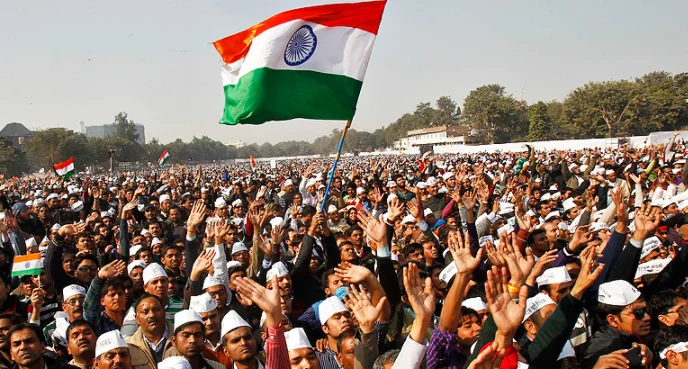The farm protests — in opposition to the government’s measures and the new laws to liberalize agricultural markets — have continued to intensify. After the shocking violence and vandalism on Republic Day, farm groups went into a huddle and it appeared that the protests would lose momentum. But when the Uttar Pradesh Police sought to disperse protesters from Ghazipur, at Delhi’s borders, Bharatiya Kisan Union leader, Rakesh Tikrit’s resistance and emotive appeal led to a renewal of the agitation.
But when this image is coupled with images of what can be seen as a degree of State coercion — either through heavy police deployment or barricades or orders of internet shutdowns or first information reports against journalists or arrests of ground-based reporters — then the narrative of ordinary citizens fighting for their livelihood against an insensitive State gets enhanced traction.
This is the broad explanation for the range of international reactions to the farm protests. But this response cannot be understood in isolation.
Ever since Narendra Modi’s impressive electoral victory in 2014, and even more so since his resounding triumph in the 2019 elections, there has been a story that has gained increased attention in the West. This is the story of India’s perceived democratic backsliding. The overwhelming tone and nature of the international media’s coverage of contentious domestic political issues reinforce a narrative that India is turning back on its democratic, secular, pluralist roots and its open and free society is no longer as open and as free.
The under-representation and exclusion of minorities from the power structure of the ruling party; instances of hate speech by members of organizations broadly associated with the ideological worldview of the ruling dispensation; and a set of laws and policies — from the effective abrogation of Article 370 in Jammu and Kashmir and the subsequent detention of leaders and crackdown on connectivity to the process to update the National Register of Citizens in Assam, which left out 1.9 million residents of the state, from the enactment of the Citizenship (Amendment) Act and the Shaheen Bagh protests to the Delhi riots — have all fed into this perception that India is sliding back from its constitutional roots. The recent international response to the farm protests has to be seen in this wider context, for in itself, the agitation may not have elicited a response except from Sikh members of the diaspora.
The government believes this narrative is unfair. After all, it is through the democratic route that the Bharatiya Janata Party (BJP) has come to power in two consecutive elections. It also believes that this international criticism is a result of a campaign by domestic political rivals and activists who have been unable to mount an effective domestic opposition to the regime and thus seek support from elsewhere. Political managers in the BJP are convinced that, in this case, international criticism has little to do with the farm laws or the nature of agricultural markets or the direction of Indian economic reforms — but guided solely by an attempt to undermine Modi internationally and box the Indian State into a corner. This narrative, many in the government believe, is also being encouraged by India’s geopolitical adversaries directly or indirectly.
But for India, democracy is both a matter of pride and a geopolitical asset. It is not a coincidence that all members of the Quad are democracies and the intent of the framework is to contain the belligerence of an authoritarian dictatorship such as China or that its democratic values give India tremendous soft power in the region and beyond. The fact that there is a new administration in Washington, which will be far more amenable to the views of human rights groups as well as factor in international media coverage, adds to the challenge. Dismissing the narrative, therefore, is not an option.
The government, then, has a choice. It can feel that the only way to counter what it sees as mischievous propaganda is by doubling down and converting it into an instrument of nationalist mobilization. This week, what appeared to be coordinated tweets from political leaders, ministers, and a range of Indian celebrities in defense of Indian sovereignty was an outcome of such a strategy. This may even be helpful domestically and put critics on a backfoot.
But it doesn’t help in countering the challenge posed by the perception that Indian democracy is in trouble. And that is why the most effective response is not by issuing a statement but by strengthening India’s democratic framework — ensuring a political structure which is more inclusive of the country’s minorities; enabling independent institutions to work independently, even if their decisions, at times, go against what the executive would prefer; deploying a more consultative and democratic method of resolving differences internally; stepping back from any measures that can be interpreted as cracking down on freedom of citizens; and evolving a more collaborative relationship with the parliamentary Opposition to send out a message of national unity on key issues.
India has the right to take its own decisions, frame its own laws, and work according to its own nationally defined priorities. Its democratically elected government has the mandate to push legislative changes and reorient policies within the framework of law. But at a time of global interconnectedness, there is bound to be enhanced scrutiny of its internal record. The focus should be to improve that record and communicate more effectively to the world.





